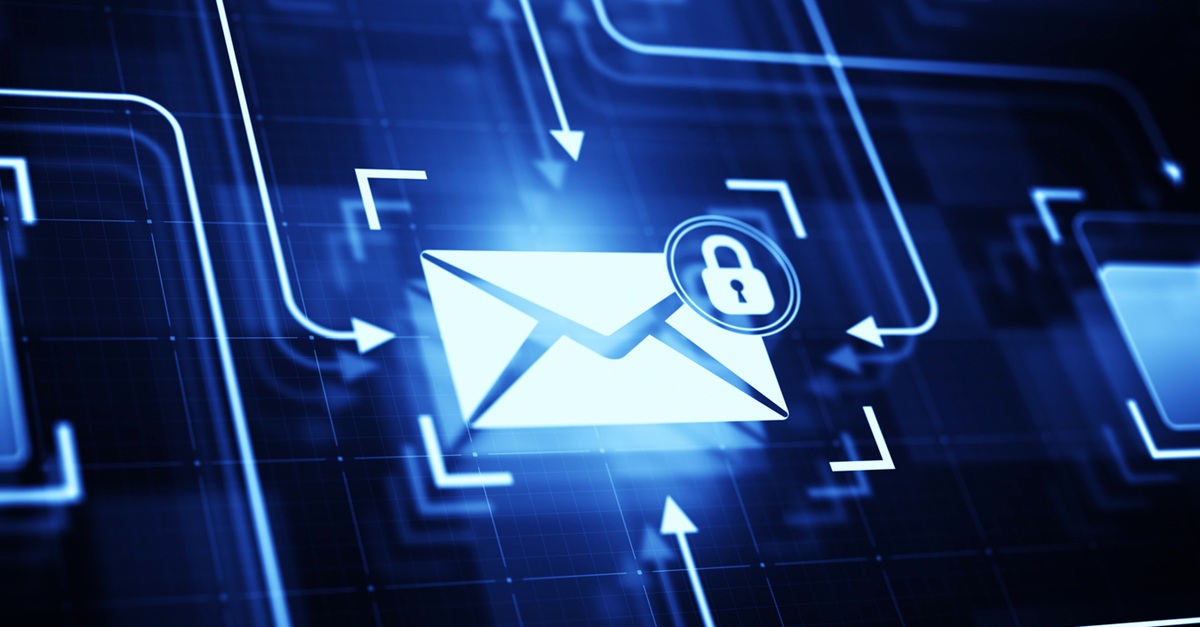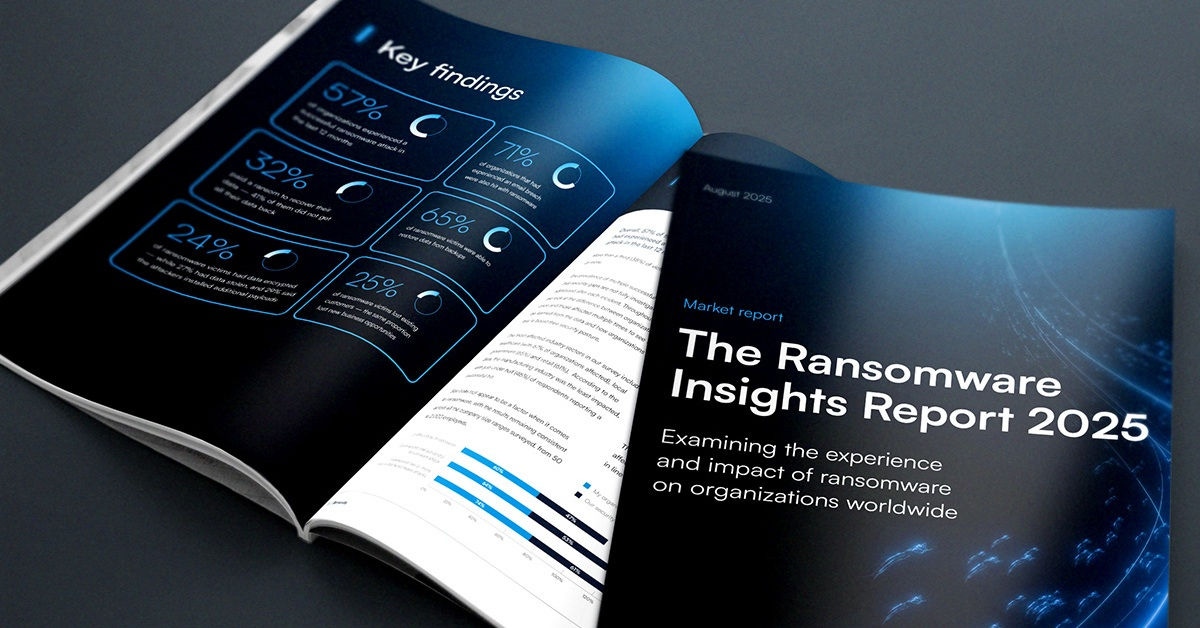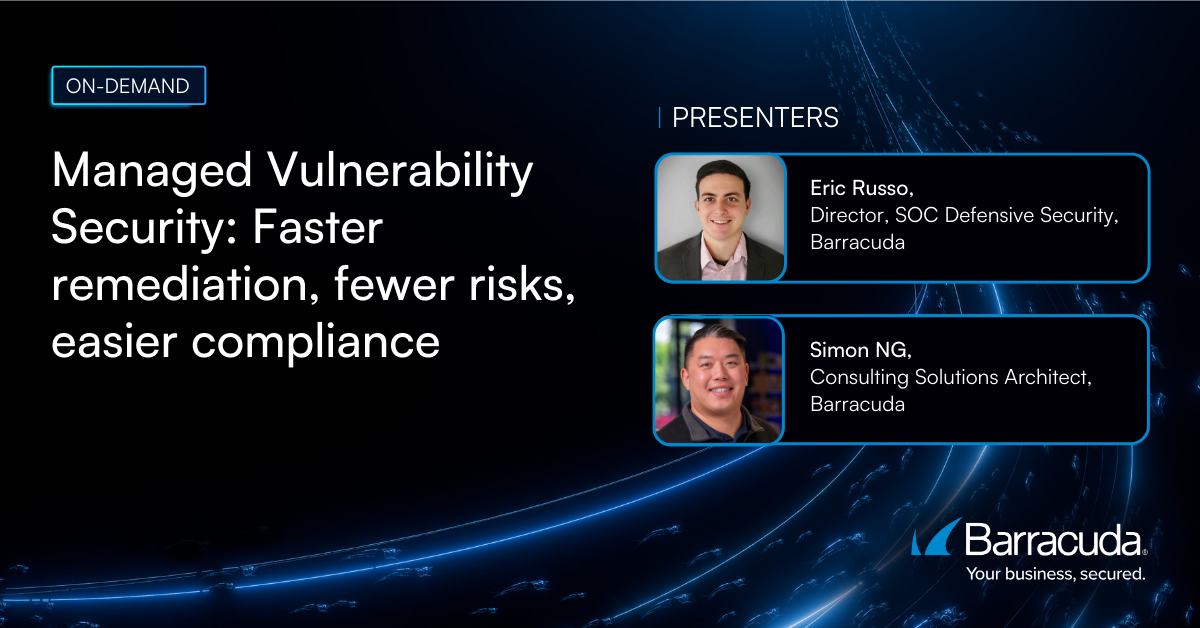
Cybersecurity Awareness Month: Den sich entwickelnden Phishing-Bedrohungen einen Schritt voraus sein
Mit dem Ende des Cybersecurity Awareness Month ist es wichtiger denn je, wachsam gegenüber Cyberbedrohungen, insbesondere Phishing-Angriffen, zu bleiben, die weiterhin an Umfang und Raffinesse zunehmen. Im letzten Monat haben wir grundlegende Themen wie Passwortsicherheit, die Bedeutung zeitnaher Software-Patches und die Vorteile der Multifaktor-Authentifizierung behandelt. Wir haben auch über praktische Strategien gesprochen, mit denen Sicherheitsexperten und Managed Service Provider (MSPs) Kunden, Kollegen und Endbenutzer befähigen können, sich gegen sich ständig weiterentwickelnde Cyberangriffe zu schützen. In diesem letzten Artikel richten wir unser Augenmerk auf die sich rasch wandelnde Phishing-Landschaft, beleuchten die neuesten aufkommenden Taktiken und geben umsetzbare Ratschläge, mit denen Sie sich das ganze Jahr über schützen können.
Phishing bleibt eine der zuverlässigsten, profitabelsten und am weitesten verbreiteten Angriffsmethoden für Cyberkriminelle. Die Reichweite der heutigen Angreifer geht weit über E-Mails hinaus. Sie nutzen Textnachrichten, Direktnachrichten-Apps, Social-Media-Plattformen und sogar Telefonanrufe, um Nutzer dazu zu bringen, Zugangsdaten preiszugeben oder Malware zu installieren. Zu Ihrem Schutz ist es unerlässlich, den Absender konsequent zu überprüfen und die Legitimität jeder Kommunikation zu bestätigen, bevor Sie auf Links klicken oder Anhänge öffnen. Wenn etwas ungewöhnlich oder verdächtig erscheint, vertrauen Sie Ihrem Instinkt. Halten Sie einen Moment inne und prüfen Sie alles noch einmal genau, bevor Sie etwas unternehmen.
Phishing im Jahr 2025: Neue Tricks und Tools
Aktuelle Erkenntnisse von Barracuda zeigen, dass Phishing-Angriffe immer gezielter, hartnäckiger und ausgefeilter werden. Hier sind einige wichtige Trends und Taktiken, die Sie im heutigen Phishing-Umfeld kennen sollten:
- Phishing-as-a-Service (PhaaS) ist auf dem Vormarsch, was es selbst für weniger technisch versierte Kriminelle bemerkenswert einfach macht, hochentwickelte Phishing-Kampagnen zu starten. Einige dieser Angriffe sind mittlerweile so fortgeschritten, dass sie die MFA umgehen und Authentifizierungscodes stehlen. Barracuda-Forschern zufolge waren 60 bis 70 % der Phishing-Angriffe, die sie 2025 beobachtet haben, PhaaS-Angriffe, was die erhebliche Bedrohung unterstreicht, die dieser Trend darstellt.
- Ausweichtechniken: Angreifer verwenden zunehmend fortgeschrittene Taktiken wie das Einbetten ASCII-basierter QR-Codes, die Verwendung von Blob-URLs und das Verschieben von Phishing-Inhalten in Anhänge, um der Erkennung durch herkömmliche Security-Filter zu entgehen. Diese sich weiterentwickelnden Methoden erschweren es automatisierten Abwehrsystemen noch mehr, bösartige Aktivitäten zu identifizieren und zu blockieren.
- Missbrauch vertrauenswürdiger Plattformen: Bei Phishing werden seriöse Content-Erstellungs- und Veröffentlichungsseiten genutzt, um bösartige Links zu hosten und zu tarnen. Dadurch wirken Phishing-Versuche authentischer und sind schwerer zu erkennen.
- KI-gestützte Täuschung: Cyberkriminelle setzen nun künstliche Intelligenz ein, um hochgradig überzeugende und fehlerfreie Phishing-E-Mails zu erstellen. Mit KI können Angreifer ihre Taktiken schnell anpassen, Nachrichten personalisieren und effektiver als je zuvor legitime Kommunikation nachahmen, wodurch diese Betrugsfälle schwerer zu erkennen sind und ihre Erfolgsquote steigt.
PhaaS senkt die Hürde für angehende Cyberkriminelle erheblich, indem es fertige Phishing-Kits und -Dienste anbietet, die anpassbare Vorlagen, automatisierte Angriffswerkzeuge und sogar Kundensupport umfassen. Diese Kits sind kostengünstig, weit verbreitet und werden häufig aktualisiert, um der Entdeckung zu entgehen. Infolgedessen machen ausgeklügelte PhaaS-Kampagnen, wie Tycoon 2FA und EvilProxy, nun den Großteil der Phishing-Angriffe aus, die sich gleichermaßen an Einzelpersonen, kleine Unternehmen und große Konzerne richten.
Wie Sie sich und Ihr Unternehmen schützen können
- Wissen ist Macht: Folgen Sie vertrauenswürdigen Quellen für die neuesten Bedrohungsinformationen und teilen Sie relevante Aktualisierungen und bewährte Verfahren mit Ihren Kollegen und Teams, damit alle über aufkommende Risiken informiert sind.
- Denken Sie nach, bevor Sie klicken: Nehmen Sie sich einen Moment Zeit, bevor Sie mit einer Nachricht interagieren – insbesondere, wenn Sie zu schnellem Handeln aufgefordert werden oder um sensible Informationen gebeten werden. Überprüfen Sie Links und Anhänge sorgfältig und klicken Sie nicht darauf, wenn Ihnen etwas verdächtig erscheint.
- Verifizieren und melden: Wenn Ihnen etwas verdächtig vorkommt, kontaktieren Sie den Absender separat über einen vertrauenswürdigen, offiziellen Kanal. Antworten Sie niemals direkt auf die fragwürdige Nachricht. Melden Sie alle vermuteten Phishing-Versuche umgehend Ihrer IT-Abteilung oder Ihrem Security-Team.
- Multifaktor-Authentifizierung (MFA): Diese zusätzliche Sicherheitsebene reduziert die Wahrscheinlichkeit eines unbefugten Kontozugriffs erheblich, selbst wenn das Passwort eines Nutzers kompromittiert ist.
- Sicherheitsschulungen: Nutzen Sie ein fortlaufendes Schulungsprogramm, wie die Schulung zur Stärkung des Risikobewusstseins von Barracuda, um Mitarbeiter darin zu schulen, wie sie Phishing-Bedrohungen erkennen und darauf reagieren können. Gut informierte Nutzer sind Ihre stärkste Verteidigung.
- Mehrschichtige Abwehrmaßnahmen: Nutzen Sie fortschrittliche Tools wie Barracuda Email Protection, um ausgeklügelte E-Mail-Bedrohungen zu erkennen, zu verhindern und darauf zu reagieren – einschließlich Identitätsmissbrauch, bösartiger Anhänge und Schemata zum Abgreifen von Zugangsdaten.
Die Phishing-Taktiken entwickeln sich weiter, aber auch unsere Abwehrmaßnahmen. Der stärkste Schutz basiert auf einer Kombination aus robusten Technologien, kontinuierlicher Schulung und der Förderung einer Kultur des Sicherheitsbewusstseins. Denken Sie am Ende des Cybersecurity Awareness Month daran, dass Cybersecurity ein gemeinsames Unterfangen ist, bei dem jeder Schritt, den Sie unternehmen, zu einer sichereren digitalen Welt beiträgt.

Der Ransomware Insights Bericht 2025
Wichtige Erkenntnisse über die Erfahrungen und Auswirkungen von Ransomware auf Unternehmen weltweit
Abonnieren Sie den Barracuda-Blog.
Melden Sie sich an, um aktuelle Bedrohungsinformationen, Branchenkommentare und mehr zu erhalten.

Managed Vulnerability Security: Schnellere Behebung von Schwachstellen, weniger Risiken, einfachere Compliance
Erfahren Sie, wie einfach es sein kann, die von Cyberkriminellen bevorzugte Schwachstellen zu finden.





